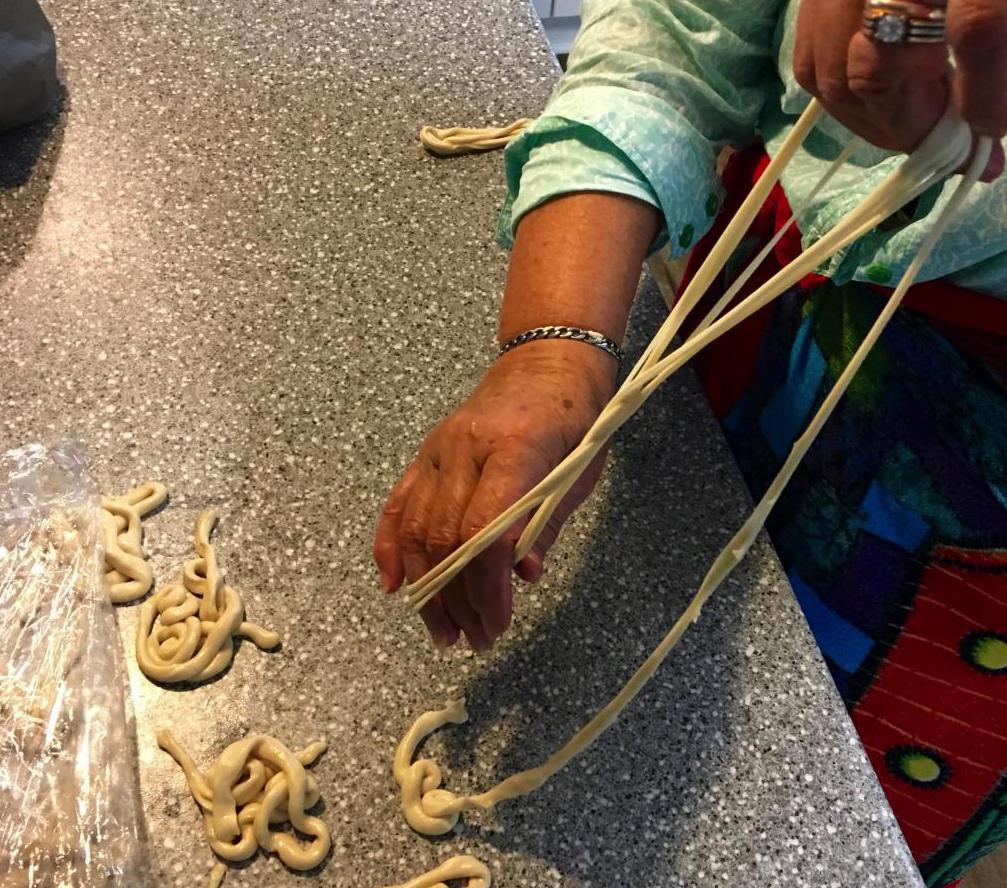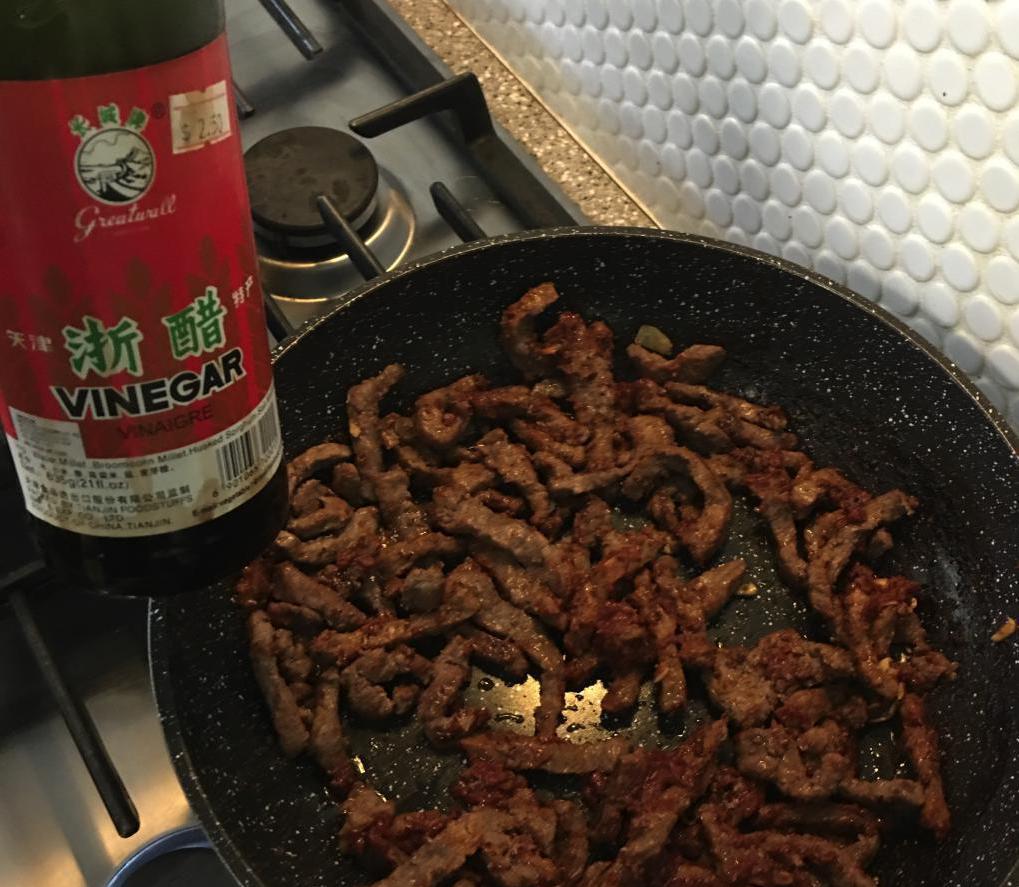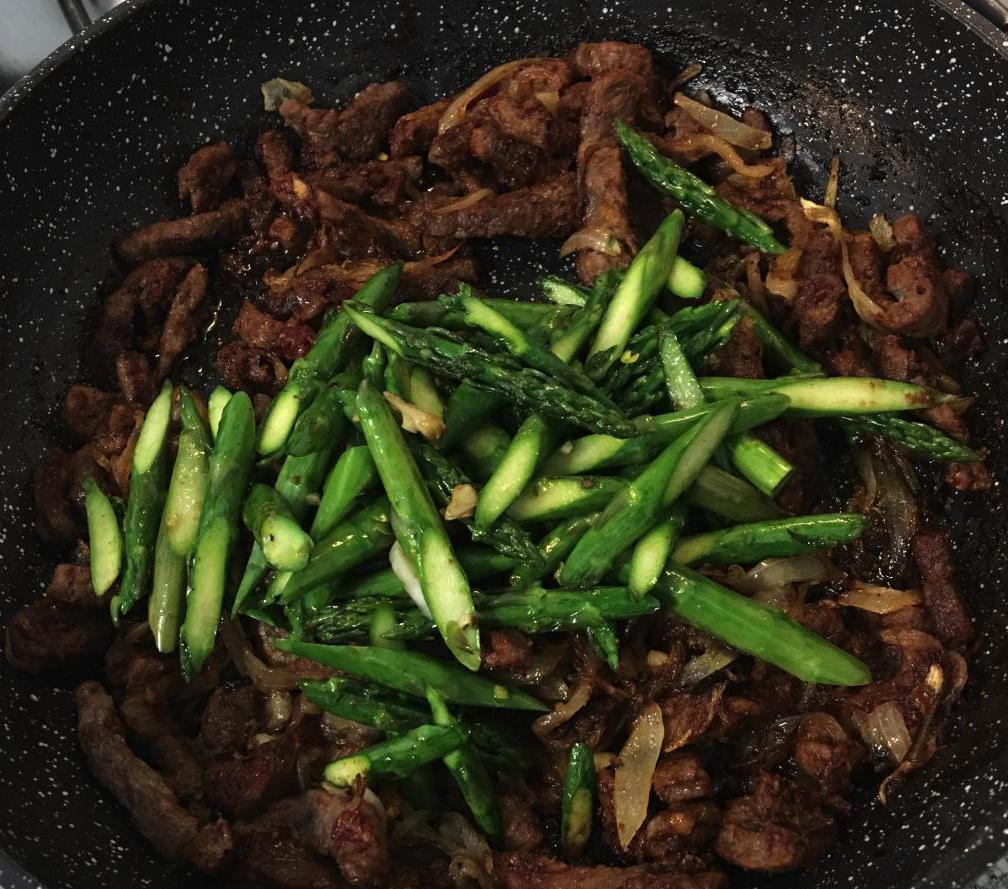Lagman in Central Asia takes pride of place in cookbooks. This dish was born, according to historians, in China, and from there it began its victorious procession to the west with the help of the ancient Uyghur people. It is not surprising that along the way the original recipe was overgrown with numerous versions. Now there are about one hundred and twenty recipes for Lagman. Russian people are mostly familiar with the Uzbek and Tajik versions of this dish. In this article, we will learn how to make an authentic Uyghur lagman. The recipe differs from the Central Asian version familiar to us both in ingredients, and in technology, and even in the appearance of the finished dish. Unlike the Central Asian, in Uyghur there is almost no gravy - only meat juice and fats. In addition, the ingredients are not stewed, but fried. In the Uigur version, noodles are always drawn out, while in Central Asia they can be cut.
Something about lagman
To the Slavs, who are more familiar with the Central Asian version of this dish, it resembles a thick soup or go noodles with a very thin stew. But in its original form, the lagman was not. In China, it is customary to serve a large noodle dish, and to it in separate bowls a few gravy. Traders mixed them with pasta in their bowl. The closest to Chinese Uyghur cuisine. The Lagman of this people consists of two components: “Chuzma” (noodles) and “Saya”. In the Central Asian version, instead of the last component, “waja” is used - that is, gravy. It is she who turns the lagman into a half-soup or half a second dish. Sai is drier. If we compare the Lagman in Uyghur with something familiar to us, then it is more like pasta in naval style. Supplements can be served separately for chuzma. But more often sai are spread on noodles. That's enough theory. We begin to prepare a real lagman. The recipe below is for three to four servings of the dish.
The recipe for a Uigur lagman at home. Ingredients
And yet this is not naval pasta for you! The list of ingredients is impressive. Less expensive, but more laborious is noodles. Unlike the Uzbek lagman, eggs are not used in the Uyghur version. The dough is made only on the basis of flour (150-200 grams), water and salt. But in the choice of meat, the Uigur dish gives the cook great freedom. It can be not only lamb, but also beef. It takes 250 grams of pulp or tenderloin. What other products does the Uigur Lagman recipe require? This, of course, is a lot of vegetables. We need to stock up with three small onions, half a Margilan radish (or daikon), a small eggplant, six green bean pods, a bunch of celery leaves (or three of its stalks), half a red bell pepper, two tomatoes, three garlic cloves. From spices, we need two tablespoons of ground coriander. Optionally, you can add to the list of ingredients a pod of hot chili pepper and a pinch of chopped cilantro.
Dough recipe
Cooking the Uigur lagman usually begins with the most laborious step - stretching the chuzma. The noodles in this dish are special. It has superelastic properties. When cooking, it swells, so it is important for us to stretch it into the finest possible threads. Therefore, the use of eggs in the test is strictly prohibited. Sift the flour into a bowl, mix it with two pinches of salt. We begin to pour warm water so that we get a pretty cool dough. We shift a piece onto a flour tabletop and knead. The longer and more diligently we do this, the better the result will be. We smash the dough with your knuckles, then roll it into a bun. Wrap it in cling film and put away in a cold place for an hour and a half. After this time, knead the dough again with your palms. When it stops sticking to your hands, we roll it into a sausage. We cut it into pieces with a finger thick. From each roll up thinner harnesses - with a pencil. Lay them on a dish, generously sprinkle with vegetable oil. Turn the harnesses over so that the dough can be saturated with fat. Leave it for half an hour.

Stretching Chusma
Uigur lagman differs from other varieties of this dish in the interesting taste of noodles. But she will have to tinker with. For half an hour, our flagella were saturated with vegetable oil and became very elastic. Check their ability to stretch. We take one flagellum in the left hand, and with the right fingers we pull it by the tip. If the dough is still steep and the rope is about to break, we will wait a little longer. And if the flagellum extends well, continue to work. We intercept the rope closer to the opposite end with our fingers and twist the thread. The resulting bundles are placed in the same dish, greasy from oil, but so that we do not lose the edges of the pasta. Experienced Uigur-style Lagman cooks can draw two-meter-long spaghetti from a piece of dough! The first two pasta will make you sweat, but then the work will start to argue.
Boil noodles
Do not leave the chuzma for the Uigur lagman raw for a long time, otherwise it may become airy and become brittle. Boil the noodles separately, in a large amount of salted water and during boiling. Chuzma, like Italian pasta, should be brought to the state of al-dente, that is, it should chew well, but remain a little firm. We discard the noodles into a colander, but so as to preserve the water in which it was boiled. We will need it later. We wash the chuzma with cold water, sprinkle with vegetable oil and mix. Now let her wait in the dish under the lid.
Laza jan
Before preparing the Uyghur lagman, you must first make it a "company" seasoning. Laza-jan is a mixture of hot chili peppers, garlic and ground coriander. It is bred to a pasty consistency with calcined vegetable oil. First, finely chop two or three cloves of garlic and rub them with a pestle with 2-3 teaspoons of red hot pepper, as well as with a few pinches of coriander. Optionally, you can add a little chopped cilantro to the laza-jan. When all the ingredients of the pasta have come into contact, add three to four soup spoons of hot vegetable oil. Mix well. Leave to cool under the lid.
Uyghur Laghman: White Sai Recipe
This version of the dish is closest to the original, Chinese recipe. And in the Celestial Empire it is customary to serve noodles on a large dish, and to it separately in small plates several meat seasonings. In Uyghur Lagman, we will prepare two sai - white and red. Meat, garlic and onions are used in both. Therefore, having cut, you need to divide them equally and lay them on different boards. Based on the fact that the meat in this dish is subjected to a short heat treatment, it must be crushed into thin strips. We cut vegetables larger. Let's start cooking with white sai. In a wok pan (a casserole is also suitable at home), we heat 2-3 soup spoons of vegetable oil. Quickly, just three minutes, fry half the onion and garlic, all the string beans. Season with salt and ground coriander (a pinch). Introduce the chopped stalks of celery. If we use the leaves of this plant, you need to add them at the end of the preparation of white sai. Stirring with a wooden spatula, fry for two to three minutes. Throw half the meat into the cauldron. Allow the same three minutes for frying. Season with a pinch of coriander and salt again. Now we send eggplant and radish to fry. In this case, the term of the heat treatment is increased until the last ingredient softens. Pour a scoop of water in which the noodles were cooked. Mix, let it boil and even evaporate a little moisture. Move the finished sai into a bowl, close it and put in a barely warm oven.

Red sai
If you are a beginner and do not really know how to cook Uyghur lagman, make it with tomato dressing. In the same wok (or cauldron) where the white sai was prepared, we warm two or three tablespoons of vegetable oil. Fry the meat. It should be cooked longer than for white say. Pieces of meat should not only turn white, but also cover with a light golden crust. Season with a pinch of salt and ground coriander. Add to the meat that part of the onion and garlic that we set aside for red sai. Optionally, you can include in this composition of vegetables and a slice of chili pepper. Fry everything for exactly three minutes. Now it's the turn of another pepper - sweet, Bulgarian. With intense frying, we cook it for three minutes too. The next step is tomatoes. We subject them to processing longer until the juice released from them is respected. Season the dish with salt and coriander again. Then - ideally - here it would be necessary to add chopped jusai, but in conditions of Slavic cuisine cilantro greens are also suitable. And, as the final stage, we add a small ladle of water in which the chuzma was cooked. We remove the red sai, like its white counterpart, in a bowl with a lid.

The first way to feed the lagman
This view is suitable when we have prepared only one dressing. And by the method of serving such a fried Uyghur lagman will be closer to the Central Asian stew. We warm everything in the same wok or cauldron with a little vegetable oil. Spread the noodles. We get in the way quickly. It should not only warm up, but also slightly yellow. Add sai. Mix. Remove from heat. We shift to a large dish. Separately, we serve a bowl with seasoning laza-jan. We give guests bowls and spoons.
The second way to feed the lagman
This species is more traditional. We put on the fire the remains of the water in which the noodles were cooked. Chuzma itself, as you recall, is stored in a warm place with us. But all the same, if it did not cool down, then it would wind up. To "revive" its amazing taste, take a colander with noodles and drop it into a wide pan with boiling broth. Or, if the sieve with chuzma is too voluminous, wash it under a stream of hot water. Put the noodles in a large dish. Separately, in different bowls we serve different types of sai and laza-jan. With this method of serving the Uigur lagman, each guest himself decides how much noodles to put and how much gravy, and which one to choose. Consumers can feel all the tones and nuances. For example, fill the chuzma with red sai and add spice to the dish by adding a drop of spicy laz-jana. Anyone who is accustomed to a more relaxed combination of taste, can be limited to white gravy. She comes out less sharp. The meat in our two sai was fried at different intensities. In white are tender slices, and in red are appetizingly crispy slices. In a word, everyone sitting at the table will be satisfied with the dish.

Cooking Tips
So we learned how to cook lagman. The Uigur type of dish turns out faster, because sai is not stewed for him, but quickly fried. This must be taken into account, so all vegetables and meat should be cut in advance, keeping them ready. After all, frying a wok in a pan over high heat is enough for two or three minutes. Finally, we give some tips. If the noodles are not flexible enough, wet your hands with a solution of water, vegetable oil, salt and baking soda. The meat for lagman in Uyghur can be different. But then you should take into account its fat content. If you decide to cook lagman from pork or some parts of lamb, you need to put less vegetable oil in sai. In addition to ground coriander, you can add other spices. Organically, turmeric, zira, star anise, ginger and a mixture of peppers will be felt in this dish. Ready lagman should also be decorated with greens. Here you can use arugula, basil, wild leek, dzhusai, cilantro, dill or marjoram.